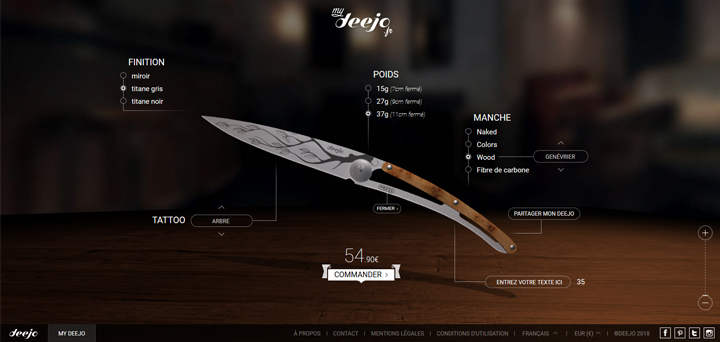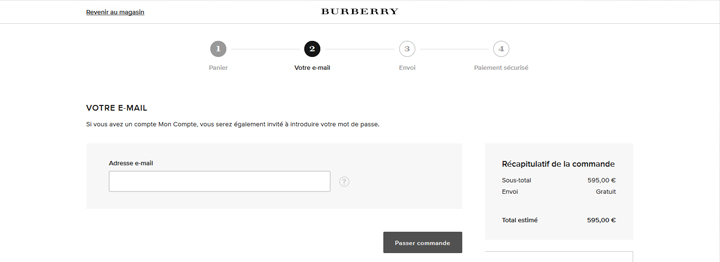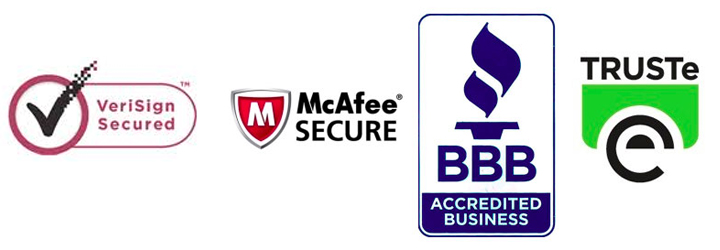Reduce the barriers to online shopping to increase conversions
Have you ever wondered what the main obstacles to online shopping are?
Even though e-commerce is growing, many customers still abandon their purchases before or after adding them to the cart.
What are the reasons for this? Why are consumers still reluctant to spend their money online? What factors affect their buying behaviour?
These are all questions that touch on the psychology of the consumer. In a market as competitive as e-commerce, a poor understanding of your customers’ needs and expectations can have a negative impact on your conversion rates.
Barriers to online shopping: definition
The brakes on online purchasing correspond to the factors that will influence the consumer’s decision and make him or her abandon a purchase.
This problem is based on the fact that the majority of consumers do not buy on a whim.
When faced with a product, the first reaction of a consumer is to ask himself if he really needs it. He will even constantly find reasons why he shouldn’t buy it. Often, it is after careful consideration that they decide to make an online purchase.
In e-commerce, working on the obstacles to online purchasing therefore consists of transforming consumer objections into certainties, in order to limit shopping cart abandonment and obtain a maximum number of conversions.
To help you, here is a list of the top 10 buying obstacles and, for each of them, solutions to overcome them.
10 Buying barriers and solutions to overcome them
Barrier to online shopping n°1: impossibility to test the product
37% of consumers feel the need to see or touch the item before buying.
This barrier to online shopping is based on the impossibility for a customer to feel, touch or use a product before buying it on an e-commerce website.
What can be done about it?
You need to make the most of the two things online shoppers can do: see and read. For this purpose :
- Write detailed, clear and complete product sheets including as much information as possible in addition to the colour, style and composition of the item.
- Include multiple high-quality, zoomable images that allow for proper product evaluation.
- Show how to use or wear your product by using video demonstrations and “how it works” type pages?
- Post customer reviews and include links to other popular and related products viewed by similar visitors to convince the customer that their choice is the right one.
- Use interactive features (3D modeling, augmented reality) to allow users to virtually try your product and see it from all angles.

Example of the use of 3D modeling on mydeejo.com
Barrier to online shopping #2: poor customer experience
43% of consumers will visit a competitor’s site if their online experience is negative.
This brake on online shopping is based on the quality of the customer experience offered by an e-commerce. A positive customer experience is one of the most important factors in convincing an online shopper to move from awareness to conversion.
What can be done about it?
Whether a user lands on your website via natural search results, by clicking on a link in social networks or through one of your newsletters, make sure that their buying journey is always smooth and easy. For this purpose :
- Don’t force your customers to create an account to buy on your site, by allowing them to order as a guest. You can also offer them the option of creating an account using their social credentials, which will make the process easier and allow you to collect their profile data as a bonus. In any case, if you want people to create an account, it’s best not to force them to do so in advance by giving them the option to do so after they have made their purchase.
- Offer a short and convenient ordering process that doesn’t require too much time or effort.
- Reduce the steps before payment. The simpler your checkout process is, the better your conversions will be.
- Make sure your site displays correctly on all devices. In 2019, more and more consumers are shopping online from their smartphones. If your e-commerce is not optimized for mobile devices, then your customers could end up leaving and abandoning their shopping cart.
Barrier to online shopping n°3: product price
54% of shoppers say they would buy a product instead of giving it up if they had a discount.
This brake on online purchases is based on the fact that on an e-commerce site, even more than in a physical store, customers are looking for THE good deal. Consumers buy on the Internet not only for convenience, but also because they expect items to be cheaper.
What can be done about it?
Many online shoppers are looking for the lowest price. If they can’t find a promotional code or coupon, they’ll look elsewhere for a better deal. To avoid this:
- Check your competitors’ prices and compare them to your own. If your products cost more than elsewhere, find a way to justify that cost by providing added value (24-hour delivery, free packaging or a related product offered as a gift, for example).
- Offer discount codes on your website instead of directly reducing the price of the item, so that the visitor is not tempted to look for promotional offers elsewhere than on your e-commerce.

The dorjoy. com jewelry site motivates the purchase by allowing the customer to earn a discount each time he adds a product to his cart
- Guarantee the refund of the item in case of return.
- Send reminder e-mails containing a promotional code to users who abandoned their shopping cart during the process.
Discover also the
best practices for abandoned cart reminder emails
Barrier to online shopping n°4: flexibility and delivery costs
64% of shoppers think delivery is important when shopping online.
This brake on online shopping is based on the consumer’s requirements regarding the delivery process when ordering from an e-commerce site.
What can be done about it?
The different delivery options offered on an e-commerce have an influence on the conversion rates. They also have an impact on the number of items customers add to their shopping cart, and the average amount of the cart. Online shoppers expect not only to be able to retrieve their ordered items easily, to be delivered quickly, but also to avoid paying high shipping costs. To meet their expectations:
- Make in-store pickup possible, when you have physical point(s) of sale.
- Be transparent by not hiding the shipping costs. Show them before the checkout process, otherwise your customers might think you’re trying to make your product appear cheaper than it really is. Give users an estimated delivery cost next to each item. Obviously, if you don’t have standardized shipping costs, this price will not be 100% accurate depending on where the e-buyer lives and how many items they buy. In this case, you can display “delivery from” followed by the minimum shipping cost.
- Offer free shipping, if you can. Free shipping helps a consumer overcome the disincentives to purchase related to transportation and shipping costs, and may encourage them to purchase more products. Some websites choose to offer free shipping on purchases over a certain value. Others offer unconditional free shipping. If you can’t afford it, the ideal is to offer free delivery to the majority of your customers. For example, if your main market is in France, you can offer free shipping to French users, but have shipping charges for e-buyers in other countries.
- Bundle the additional shipping costs into the product cost to offer “free” shipping to the customer. It is better to have a less competitive price on the item you are selling than to offer an extremely low price that inflates considerably because of the added shipping costs.
- Provide customers with information about the status of their order, through a tracking number.
Barrier to online shopping #5: returns and refunds
11% of people abandon baskets because they don’t understand the shipping details.
This brake on online purchasing is based on the consumer’s uncertainty and fear of ordering an item that may not be suitable for them.
What to do about it:
Consumers fear buying an item that is not what they expected, and then being stuck with their purchase. To get around this problem :
- Clarify your return and refund policy by creating a dedicated page that answers all questions related to customer returns.
- Do not charge for the return by taking care of its shipping costs.
- Offer a money-back guarantee.
- Be transparent about your return and refund process. When users know they can return the product, they will have no reason not to buy it.
- Make returns possible in store, if you have physical outlets.
Find out more about best practices for return and refund policies
Barrier to purchase n°6: payment methods
Over 50% of consumers will cancel their purchase if their preferred payment options are not available.
This barrier to online shopping is based on customers’ preferences for certain payment methods when making purchases.
What can be done about it?
Just because you are familiar with and trust a particular payment method does not mean your customers are. Your e-commerce must accommodate their needs and preferences. For this purpose :
- Offer as many payment options as possible. The more your customers have available, the more likely they are to complete their purchases.
- Offer a combination of payment methods, with an international online payment solution like Paypal and a standard credit card payment process.
- Don’t forget about local payment methods, such as AliPay in China or Google Wallet in the US, if you’re shipping to those countries.
Barrier to online shopping n°7: fear of scams
73% of consumers believe that online shopping is more risky than offline shopping.
This brake on online purchasing is based on the mistrust of consumers when they make a purchase on an e-commerce site.
What can be done about it?
On the Internet, buyers fear the scam. In order to gain their trust :
- Show that there are people, faces and names behind your company, with an “about” page where you tell your story and introduce your teams. Tell them about your goals, commitments and values.

Example of an “about” page on innocent.fr
- Link your website to your various social accounts (Facebook, Instagram, Twitter, Pinterest…) and be active there. Post regularly and interact with your customers to build credibility.
- Join the Google Customer Review program and add it to your e-commerce site to make customers feel more confident.
- Include social proof on your homepage and/or product pages, such as reviews, testimonials and customer reviews.
- Keep your contact information (email address, physical address and phone number) readily available throughout the ordering process.
- Make your legal notices and terms and conditions as accessible as possible.
On this subject, find out how to write the terms and conditions of your e-commerce
- Take care of the conception, the design and the contents of your e-commerce site.
Barrier to online shopping n°8: e-commerce site security
83% of consumers want more assurance that their information is secure.
This disincentive to purchase is based on customers’ concerns about the risk of their personal information being compromised or stolen.
What can be done about it?
Because of online fraud, a new buyer may feel the need to be reassured about the security and confidentiality of their data. To alleviate this anxiety and ease safety fears, you can:
- Switch your site to https by setting up an SSL certificate, so that a padlock appears in the browser’s address bar.
Discover also our guide to secure your website in https
- Indicate that your e-commerce site and payment process are secure and reliable, with security icons (such as a padlock) and a small message to build trust. Often, these elements are enough to reassure consumers.
- Strategically place (in your footer, in your order tunnel, near your registration form…) your labels, certifications and other trust badges to reassure users and show them that their information will not be misused. Some of the most common trust badges include McAfee, VeriSign, BBB and TRUSTe.
- Include a privacy policy on your e-commerce site, clearly stating how you will use the data you collect so that customers know their information is in good hands.
Buyer deterrent #9: lack of customer service
51% of consumers would be more likely to make an online purchase if they had a way to get instant answers to their questions.
This barrier to online shopping is based on the impersonality of the service provided by an e-commerce site, since the purchasing process only involves the customer and his computer/mobile device.
What can be done about it?
In a physical store, the presence of salespeople can answer customers’ questions and help them make the right decision by receiving personalized advice. To reproduce this human contact on your e-commerce site:
- Provide online chat functionality on your site so that customers get a real-time response.
- Answer questions on social networks (via Facebook Messenger and/or WhatsApp) and set up a chatbot on instant messaging solutions.
- Set up a forum where customers can instantly post their queries and get a response from customer support.
- Create a comprehensive FAQ with answers to recurring problems.
- Display your phone number and/or Skype username prominently on the home page.
- Consider using a tool to provide 24/7 customer service. Ibbü, for example, allows brands to chat with their customers by providing a community of experts to answer their questions at any time of the day or night.
Buyer deterrent #10: Company reputation
90% of consumers are nervous and concerned when they make a purchase from a new or unfamiliar e-commerce site.
This brake on online purchasing is based on the consumer’s fear of buying from a company/brand that they are not sure of the quality of the products.
What can be done about it?
Online, the risk of a product not working as expected or not meeting the customer’s expectations comes from not being able to touch, feel and try it. This is particularly true for certain types of products, such as clothing, whose attributes (fit, fabric quality, etc.) can be evaluated before purchase in a physical store. When buying clothes on the Internet, consumers will often rely on other information, such as the reputation of the brand. To reassure the user about the quality of your products:
- Implement a strategy of PR
strategy, especially with bloggers and other influencers. - Build your authority in your field with a blog so that users perceive you as an expert. They will be convinced that your product is among the best in your market.
- Post your press releases on your e-commerce site and social media accounts, in case you get media coverage.
Unlike buying in a shop, buying online requires little effort and time. However, consumer demands remain the same. They want a simple and user-friendly experience, choice, transparency and attractive offers.
By understanding these expectations and the different barriers to online shopping, you can find solutions to overcome customer objections and fears… which leads to better conversion rates!











Leave a Reply
You must be logged in to post a comment.